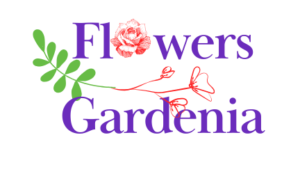Beautiful flowers gardenia Plants For Your homes

Growing your own vegetables is rewarding: you get fresher, healthier food and reduce your footprint. To keep your garden productive, choose the best organic fertilizers that feed the soil and support strong plant growth without relying on harsh chemicals.
Organic fertilizers come from natural sources—compost, manure, worm castings, seaweed, and plant meals—and they build healthier soil over time. Unlike many synthetic fertilizers, organics release nutrients slowly, improve soil structure and water retention, and help create a living, resilient growing medium for your garden.
By adding organic matter—compost as a foundation, supplemented with manure or plant-based fertilizers—you enrich the soil and feed the microbes that make nutrients available to plants. The result is healthier vegetables that taste better and a garden ecosystem that’s more sustainable.
Key Takeaways:
- Organic fertilizers build nutrient-rich soil and support steady plant growth without synthetic chemicals.
- Compost, manure, and plant-based fertilizers are effective organic matter soil amendments that improve structure and water-holding capacity.
- Organics release nutrients slowly, lowering the risk of burning and helping roots and beneficial microbes thrive.
- Choose the right fertilizer by matching your soil’s needs (get a soil test) and the crop’s nutrient demands for the best results.
- Sustainable gardening practices—using organic fertilizers and adding regular organic matter—help gardens stay productive and eco-friendly.
The Benefits of Using Organic Fertilizers in Your Vegetable Garden
Organic fertilizers are a smart choice for vegetable gardens because they do more than feed plants — they build soil. By adding compost, manure, or plant-based amendments, you increase organic matter, boost microbial life, and improve the soil’s capacity to hold water and nutrients. Over time this creates healthier plants and more resilient garden systems.
Using organic vegetable fertilizers supports a thriving garden ecosystem: the slow release of nutrients (N, P, K and micronutrients) reduces burn risk and provides steady food for roots and beneficial microbes, helping plants reach steady growth and higher yields.
Improving Soil Health and Structure
Organic soil amendments—like compost and worm castings—improve texture and structure as they decompose. That means better aeration, less compaction, and improved water retention, so roots have easier access to oxygen and moisture during dry spells.
Organic fertilizers also help reduce compaction over time, improving drainage and enabling deeper root penetration — a big advantage for thirsty vegetables and heavy soils.
Providing Essential Nutrients for Plant Growth
Organic amendments supply the primary nutrients—nitrogen, phosphorus, and potassium—along with micronutrients and organic matter. Because many organics release nutrients slowly as microbes break them down, they provide a steady nutrient supply that lowers burn risk and supports sustained growth.
Where rapid nitrogen is needed, products like fish emulsion or blood meal can help, while bone meal or rock phosphate provides phosphorus for roots and fruiting. Use a soil test to match inputs to nutrient gaps rather than guessing.
Organic fertilizers benefit plants and the environment by building healthy soils, helping conserve water, and reducing pollution risk when used correctly.
Promoting Beneficial Microbial Activity
Compost for vegetables and other organic inputs feed the soil food web. A healthy microbial community breaks down organic matter, releases nutrients in plant-available forms, and suppresses some pathogens — a key reason organic fertilizers contribute to long-term garden health.
When choosing the best vegetable garden fertilizers, consider your soil type, the crop’s needs, and how quickly you need nutrients to be available. Organic gardening practices may take more time upfront than quick synthetic fixes, but the environmental and long-term soil benefits make them worth the effort.
To get the most from organic fertilizers: choose the right product for the crop, apply at recommended rates and timings, keep the soil evenly watered to aid nutrient uptake, and mix several types of organic inputs over the season for balanced nutrients and healthy soil life.
- Choose the right fertilizer for the crop (use a soil test to find nutrient gaps).
- Apply at the recommended time and rate (seedbed vs. sidedress vs. foliar applications).
- Water consistently to help microorganisms mobilize nutrients and to support uptake by roots.
- Combine different organic fertilizers (compost + targeted amendments) across the season for balanced nutrition.
Compost: The Foundation of Organic Vegetable Gardening
Compost is the single most useful organic fertilizer for vegetable gardens. Made from decomposed yard waste and kitchen scraps, it’s a balanced soil amendment that improves soil structure, increases water-holding capacity, and supplies a broad range of nutrients and beneficial microbes that support plant growth.
Creating Nutrient-Rich Compost at Home
Making good compost is straightforward. Pick a shady, well-drained spot and layer “greens” (fresh grass clippings, kitchen vegetable scraps) with “browns” (fallen leaves, shredded paper) at about a 1:2 green-to-brown volume ratio. Keep the pile moist like a wrung-out sponge and turn it regularly to add air—those steps feed the microbes that convert waste into nutrient-rich compost.
If you want faster results, use a tumbler or a multi-bin system to better control moisture and temperature; well-managed hot composting can produce finished compost in a few weeks. For a low-effort option, cold composting takes longer but still yields rich compost over months.
Applying Compost to Your Vegetable Garden
Only use fully finished, crumbly compost in the garden. Here are simple, effective applications:
- As a top dressing: spread a 1–2 inch layer around established plants to slowly add nutrients and organic matter.
- Incorporated into beds: mix compost into the top 6–8 inches before planting to improve structure and nutrient levels.
- Compost tea: steep finished compost in water (roughly 1:5 ratio) for 24–48 hours, strain, dilute if needed, and use as a supplemental liquid feed or microbial inoculant.
Regular additions of compost feed plants and the soil food web, improving yields and resilience. As a baseline organic fertilizer, compost supports nutrient availability, water retention, and healthy root development—making it a cornerstone of successful vegetable gardening.
Animal-Based Organic Fertilizers for Vegetable Gardens
Animal-based organic fertilizers are concentrated nutrient sources that can correct specific deficiencies and boost growth. When properly composted or used at recommended rates, they supply nitrogen, phosphorus, and potassium while supporting soil life. Below are common animal-derived options and practical tips for using them safely.
Composted manure (cow, horse, chicken, rabbit) is a versatile choice: properly aged manure adds organic matter and nutrients without the risk of burning plants. Use composted cow or steer manure as a general soil builder; chicken manure is high in nitrogen and excellent for leafy greens but must be well-composted to avoid root damage.
Composted Manure: Cow, Horse, Chicken, and Rabbit
Choose manure based on nutrient needs and safety: chicken manure is high in nitrogen (great for fast leafy growth) but should be composted at high temperatures to kill pathogens and to prevent burning. Horse manure often contains weed seed—composting reduces that risk. Rabbit and goat manure are “cooler” and, when composted or aged, are safe and nutrient-rich; rabbit droppings are sometimes used fresh in small amounts because they break down quickly.
Bone Meal and Blood Meal
Bone meal supplies phosphorus (useful when planting bulbs, root crops, or fruiting vegetables to support root development and blooms). Blood meal is a fast-release source of nitrogen—use it conservatively as a sidedress for nitrogen-hungry crops. Always follow product directions and avoid over-application to prevent nutrient imbalances.
Fish Emulsion and Guano
Fish emulsion is a quick liquid feed that provides soluble nitrogen and some micronutrients—great as a gentle foliar spray or soil drench during active growth. Guano (bat or seabird) is an intense, natural fertilizer high in nutrients and is often used to support fruiting and flowering—use sparingly and source responsibly.
Safety and sourcing notes: always compost or age raw manure to reduce pathogen risk and to prevent burning plants. Check product labels for N-P-K and follow recommended rates. Consider sustainability when choosing inputs like fish emulsion and guano—look for responsibly sourced products.
Start with conservative application rates and observe plant response: too much nitrogen (from raw manures or blood meal) can encourage leafy growth at the expense of fruits, while overuse of any concentrated amendment can upset soil balance. When used thoughtfully, animal-based fertilizers are powerful tools for feeding your plants and building healthy soil.
Plant-Based Organic Fertilizers for Vegetable Gardens
Plant-based organic fertilizers are an excellent way to feed vegetables while keeping the garden chemical-free. These inputs add nutrients, improve soil biology, and tend to be gentler and slower-release than concentrated animal-based options. Use them to maintain soil health, support steady growth, and boost flavor in your crops.
Seaweed and Kelp Meal
Seaweed and kelp meal are rich in micronutrients, natural growth stimulants, and trace minerals. While they typically have lower N-P-K numbers than manures, they improve plant vigor, root development, and resilience to stress. Use kelp as a soil amendment or a diluted foliar spray to support flowering and fruit set.
Seaweed fertilizers, such as kelp extracts, are particularly helpful for tomatoes, beans, squash, and zucchini—applied in spring and during active growth they boost flowering and overall plant health. Choose responsibly harvested products to reduce environmental impact.
Alfalfa Meal and Cottonseed Meal
Plant meals like alfalfa and cottonseed supply steady-release nutrients and organic matter. Alfalfa meal is a balanced option that supports overall growth; cottonseed meal is higher in nitrogen and helps leafy vegetables. Both release nutrients over time, supporting sustained plant nutrition.
Alfalfa meal is a popular balanced amendment, while cottonseed meal (e.g., E.B. Stone Naturals Cottonseed Meal) gives a stronger nitrogen boost—use according to crop needs and local recommendations.
Legume Cover Crops as Green Manure
Planting legume cover crops (clover, vetch, peas) fixes atmospheric nitrogen into the soil and provides organic matter when turned in as green manure. This practice saves money, reduces the need for external inputs, and builds a healthier soil ecosystem for following vegetable crops.
Adding these plant-based fertilizers regularly—alongside compost—helps maintain soil health, feed microbes, and supply a gentle, steady stream of nutrients. For best results, match the amendment to the crop (e.g., kelp for vigor and stress resistance; alfalfa meal for balanced feeding) and follow recommended application rates.
Choosing the Best Organic Fertilizer for Veggies
Picking the right organic fertilizer starts with a soil test — that tells you which nutrients are missing and whether you need to focus on nitrogen, phosphorus, or potassium. Use compost as a foundation for most beds, then add targeted amendments to correct specific nutrient gaps for your vegetable crops.
Compost is an excellent all-purpose organic fertilizer: it supplies nutrients, improves soil structure, and increases water-holding capacity. If a soil test shows a specific deficiency, supplement compost with animal- or plant-based inputs to balance the nutrient profile.
Animal-based amendments (composted manure, bone meal, blood meal) supply concentrated nutrients: bone meal for phosphorus to support roots and fruiting, and blood meal as a quick nitrogen boost for leafy growth. Apply these carefully and follow label directions to avoid overfeeding.
Plant-based fertilizers such as seaweed, kelp meal, alfalfa meal, and worm castings are gentle sources of nutrients and microbes. They’re ideal for ongoing maintenance and for improving plant vigor without dramatic nutrient spikes.
When evaluating products, check the N-P-K and think about the crop: leafy greens need more nitrogen, root crops and fruits benefit from potassium, and flowering/fruiting plants often appreciate phosphorus. For many home gardeners, a balanced organic blend (a general-purpose 6-6-6 style product) can be a convenient baseline, supplemented as needed.
Mixing different organic fertilizers across the season — for example compost as a base, occasional blood meal or fish emulsion for nitrogen, and bone meal for phosphorus at planting — gives plants a balanced diet while supporting soil life. Always follow application timing and rates, and water after applying granular amendments to help nutrients become available.
Quick checklist: run a soil test → add compost as a base → target nutrient gaps with specific organics → follow rates and water in.
By focusing on soil health, matching amendments to plant needs, and combining compost with targeted organic fertilizers, you’ll build a productive vegetable garden that supplies healthy nutrients to your plants and sustains soil life season after season.
Conclusion
Organic fertilizers are a cornerstone of successful vegetable gardening because they prioritize long-term soil health. Rather than delivering a one-off nutrient spike, organics—especially compost—build structure, increase water-holding capacity, and feed the microbes that make nutrients available to plant roots. The result: healthier plants, better-tasting vegetables, and a more resilient garden ecosystem.
Compost fertilizers remain the best baseline amendment for most vegetable gardens. For targeted needs, animal-based fertilizers (composted manure, bone meal, blood meal) supply concentrated nutrients, while plant-based options (seaweed, alfalfa, worm castings) gently boost micronutrients, microbial activity, and plant vigor.
All of these fertilizers help soil hold more water and air, which supports root health and reduces irrigation needs. Plant-based inputs such as seaweed also add trace elements and natural growth stimulants, while slow-release organics help maintain steady nutrient content over time.
Choosing the right organic vegetable garden fertilizer depends on the crop and your soil. Rather than relying on broad statistics, use a soil test to identify gaps, then apply compost as a foundation and add specific fertilizers to target missing nutrients—this tailored approach boosts soil life and helps prevent disease.
In short, focus on building good soil: add compost regularly, match targeted organic fertilizers to your vegetables’ needs, and prioritize sustainable, responsibly sourced inputs. That combination will help you grow tastier, healthier vegetables while protecting the environment and supporting biodiversity.
FAQ
What are the benefits of using organic fertilizers in vegetable gardens?
Organic fertilizers improve soil structure and add organic matter that helps soils hold water and air. They supply essential nutrients—nitrogen, phosphorus, and potassium—along with micronutrients and a slow-release profile that reduces burn risk. Most importantly, organics feed beneficial microbes that break down matter into plant-available nutrients, creating a healthier environment for roots and stronger plant growth.
How can I create nutrient-rich compost at home for my vegetable garden?
Collect a mix of “greens” (kitchen vegetable scraps, fresh grass clippings) and “browns” (fallen leaves, shredded paper) at a roughly 1:2 green-to-brown volume ratio. Build a pile or use a bin in a shaded, well-drained spot, keep moisture like a wrung-out sponge, and turn the pile every 1–2 weeks to add oxygen. Hot composting (higher temperatures) yields finished compost in weeks; cold composting takes months. Always avoid adding meat, dairy, or diseased plants, and wait until compost is crumbly and earthy before applying. For a liquid boost, steep finished compost in water (about 1:5 compost to water) for 24–48 hours to make compost tea, then strain and dilute as needed before use.
What are some animal-based organic fertilizers suitable for vegetable gardens?
Common animal-based fertilizers include composted manure (cow, horse, chicken, rabbit), bone meal, blood meal, fish emulsion, and guano. Composted manures add organic matter and balanced nutrients; chicken manure is high in nitrogen but must be well-composted to avoid burning plants. Bone meal supplies phosphorus (good for roots and fruit), blood meal offers a quick nitrogen boost, fish emulsion is a gentle liquid nitrogen source, and guano can be used sparingly for flowering and fruiting. Always compost or age raw manures to reduce pathogen risk and follow application rates on product labels.
What are some plant-based organic fertilizers I can use in my vegetable garden?
Plant-based fertilizers include seaweed and kelp meal, alfalfa meal, cottonseed meal, legume cover crops (green manure), and worm castings. Seaweed products provide micronutrients and growth stimulants and are excellent as foliar sprays or soil drenches. Alfalfa and cottonseed meals release nitrogen and other nutrients slowly, while worm castings are a nutrient-dense soil amendment rich in beneficial microbes. Legume cover crops (clover, vetch) fix atmospheric nitrogen and, when turned in, add organic matter and nitrogen for following crops.
How do I choose the best organic fertilizer for my vegetable garden?
Start with a soil test to identify nutrient deficiencies. Use compost as the baseline amendment to build organic matter, then target specific needs with animal- or plant-based fertilizers: blood meal or fish emulsion for nitrogen-hungry leafy greens, bone meal or rock phosphate for phosphorus to support roots and fruiting, and potassium-rich amendments for root crops. Look at N-P-K ratios on products and combine inputs over the season for a balanced nutrient program. Water after applying granular amendments and monitor plant response, adjusting rates as needed.


























